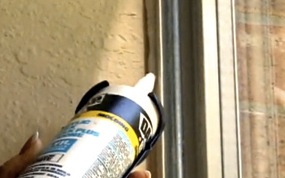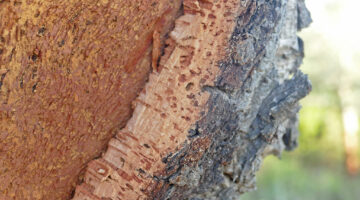
Draught Proofing Materials
In our main draught proofing technology page we describe many of the areas where draughts can occur and we give an overview of how to stop the draughts. Here, we want to describe some of the different materials that can be used to draught proof the home.
Flexible silicon sealant
Flexible silicon sealant is a viscous gel that can be squeezed into gaps using a sealant gun to help stop draughts. The sealant will set in the gap forming a draught barrier, but will still be flexible so will accommodate some movement if used between floorboards for example.
Silicon sealant takes about 24 hours to cure (set) at which point it will be a waterproof barrier. It is ideally used around window frames (between the wall and the window frame), between skirting boards or floorboards. Obviously don’t use this type of draught proofing on windows, since once it sets you won’t be able to open the windows!
Typical price: Silicon sealant – £5 / 300ml + £5 for the reusable silicon skeleton gun (required to apply the silicon sealant).
Brush Strips
Brush strips are either plastic or metal strips with brushes attached. These come in lots of different forms, for example they may have different length bristles or the bristles themselves may be made out of a variety of different materials.
These are again relatively easy to install, and are ideal for installing on the bottom of doors thereby preventing potential draughts entering the home from between the door and the floor. It is imperative you don’t have bristles that are too long as this may restrict the ability to open doors or windows.
To attach these to the door, the metal strip tends to be screwed into door to hold them in position using screws, but some use an easily removable plastic bracket, so they can easily be replaced.
Typical price: £10 per door.
Rubber Blades / Fine Nylon Brush Pile
Both rubber blades and fine nylon brush pile are used to prevent draughts entering the home around ill-fitting windows with gaps in excess of 5mm. Installing both of these materials is a simple DIY job, since they can be attached in position using adhesive strips, or small screws.
If professionally installed, the rubber blades or nylon will most likely be embedded into the window frame giving an even more subtle end result. If the draught is between the top and bottom sashes, fix the fine nylon brush pile strip to the bottom sash at the meeting point.
Typical price: Rubber Blades / Nylon Brush pile – £5 per 5m
Rubber or Polymer foam seal
These are used in a very similar way to rubber blades / nylon brush pile, but are used when the gap you are trying to draught proof is from 1mm – 5mm.
Typical price: Rubber seal / Polymer foam seal – £5 per 5m
Expandable Polyurethane Foam
For large gaps, polyurethane expanding foam can be used. This foam is ideal for filling and sealing awkward gaps, since it can be squirted into place using a straw like applicator, where it expands to fill the space. Many of the companies producing this have a built in applicator, but you can also buy cheaper cans of foam and buy a separate reusable applicator.
Once it has expanded and set solid, it can then be cut or sanded down ready for painting or plastering. This expandable foam also offers some acoustic insulation in addition to stopping the draughts.
Typical price: Expandable foam with built in applicator – £8, can of foam & the reusable applicator – £4 + £20 for applicator
Chimney Balloons
We have written a detailed section on chimney balloons, these can obviously only by used in chimneys but can be easily deflated or re-inflated as required, so they are a very flexible means of draught proofing. They are inserted into the chimney space and then inflated to ensure an air tight fit.
Typical Price: A medium sized chimney balloon – £20–23 (including inflation tube)












No Comments yet! Be the first one.